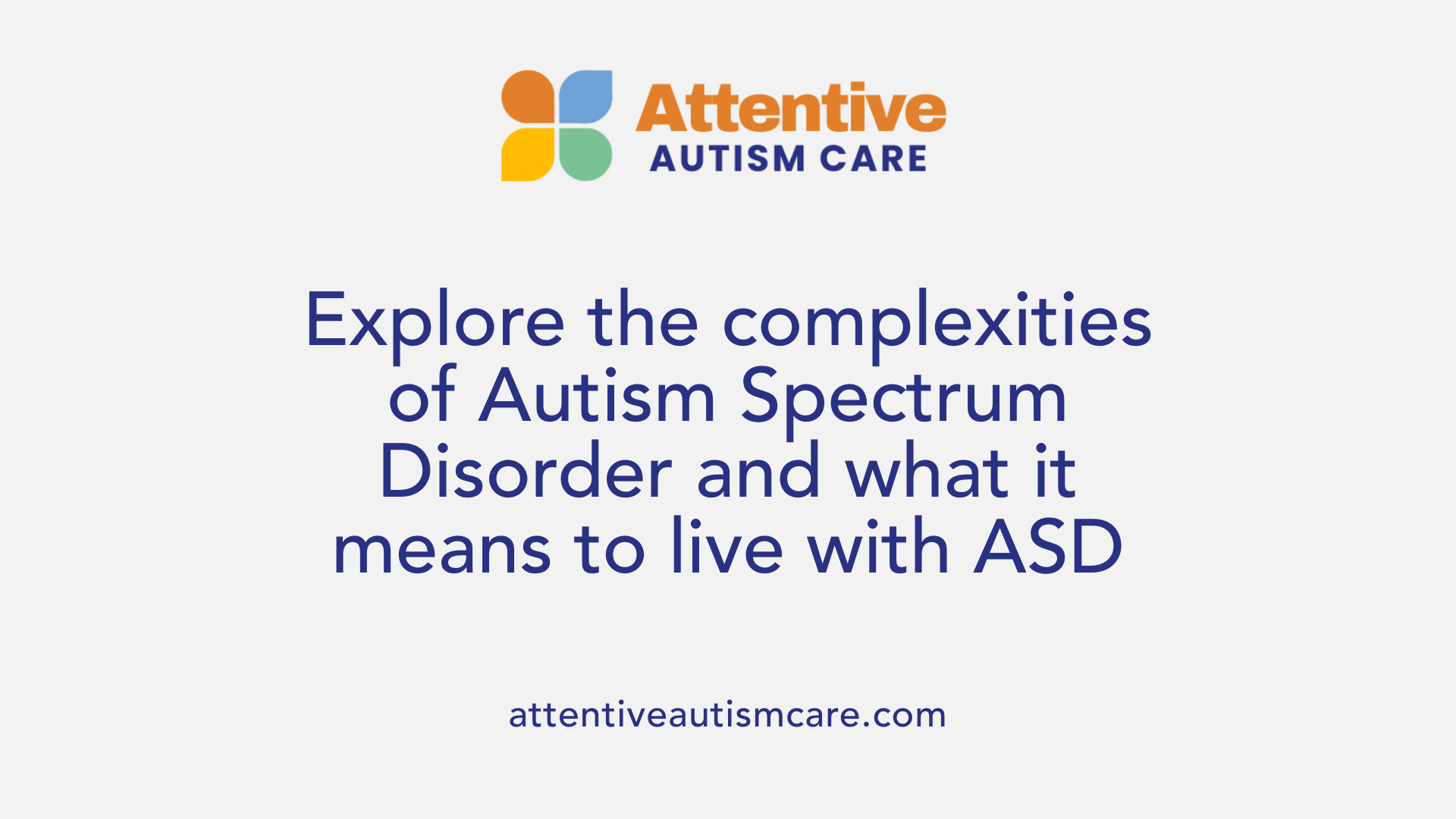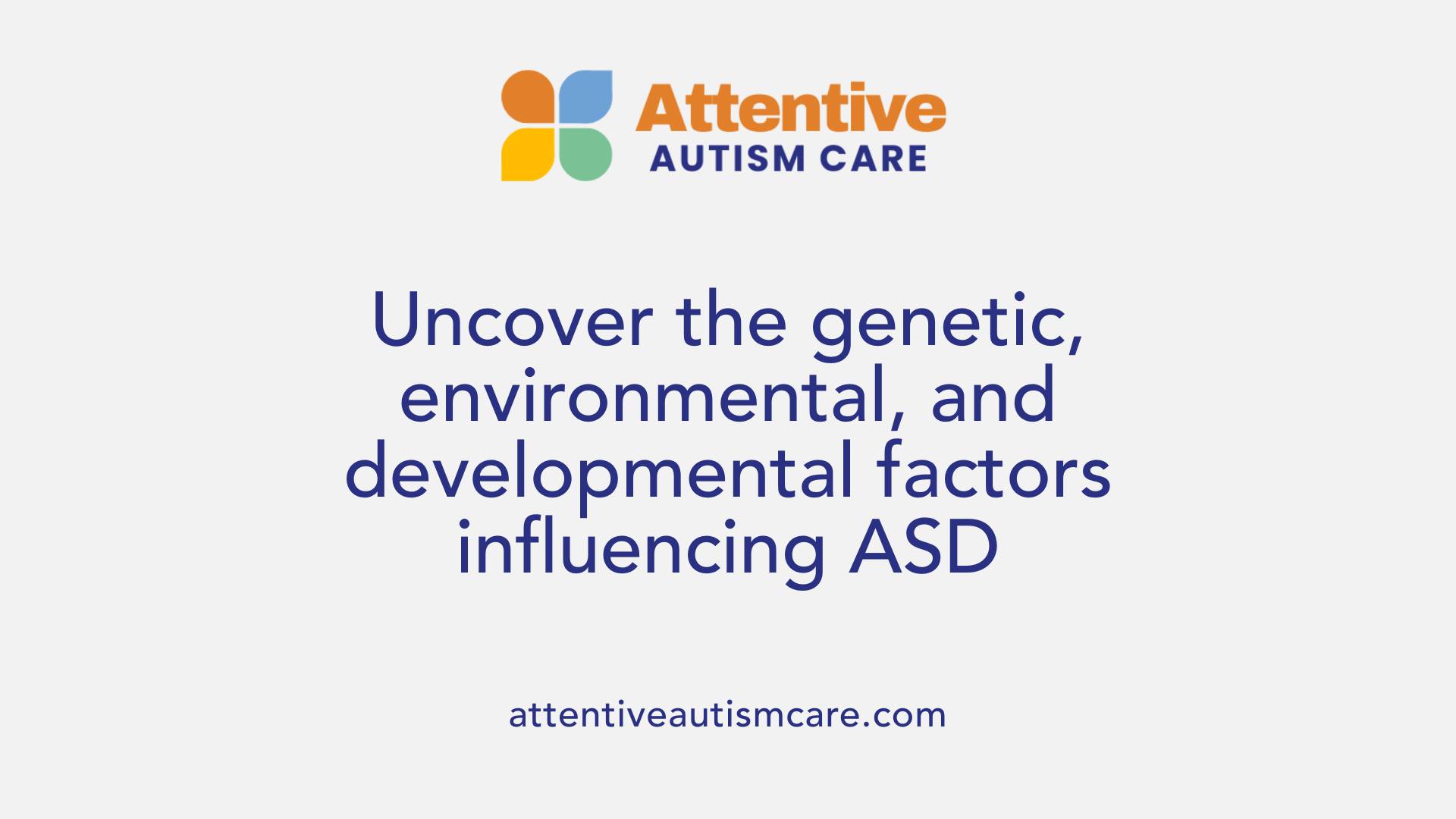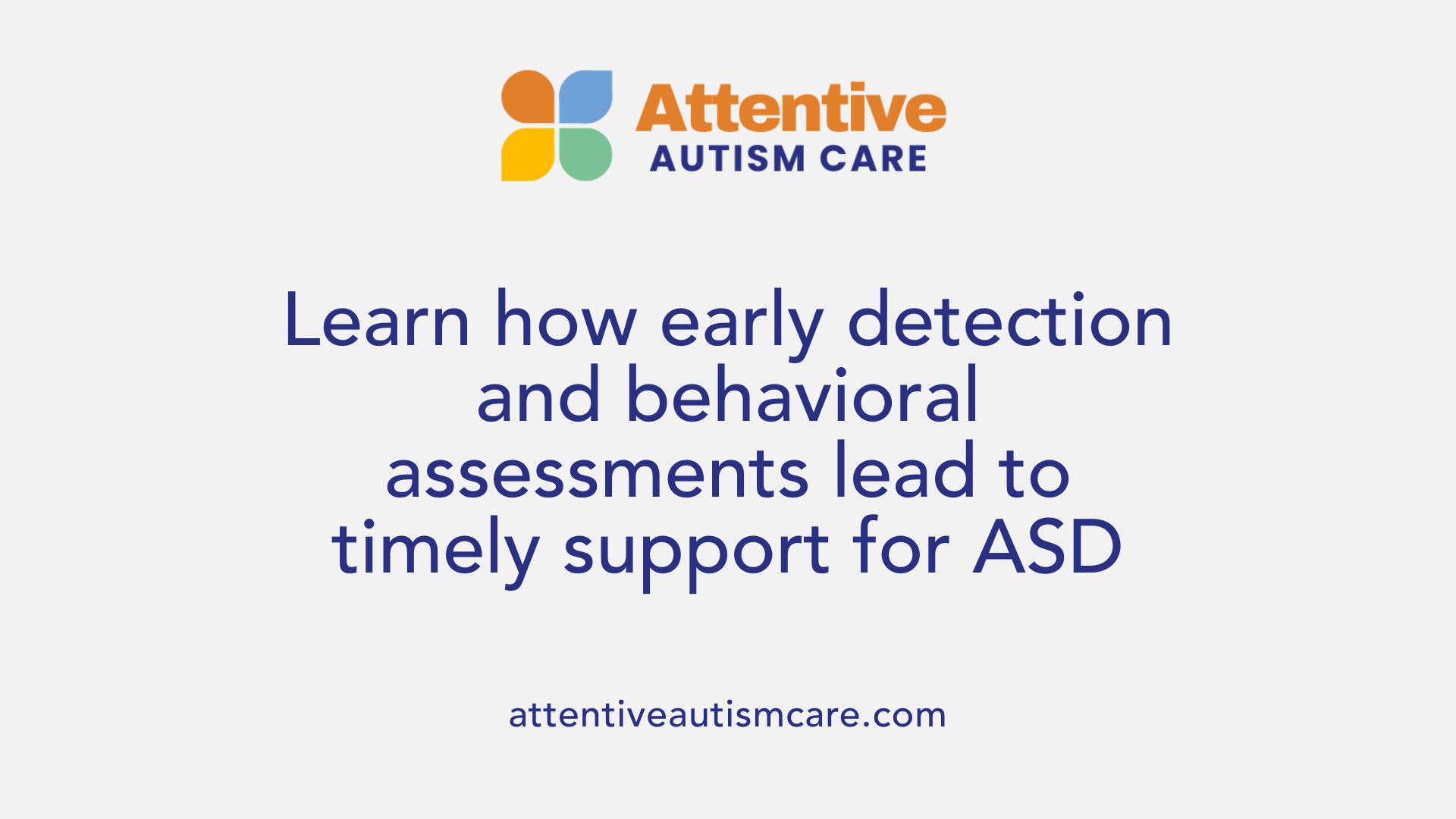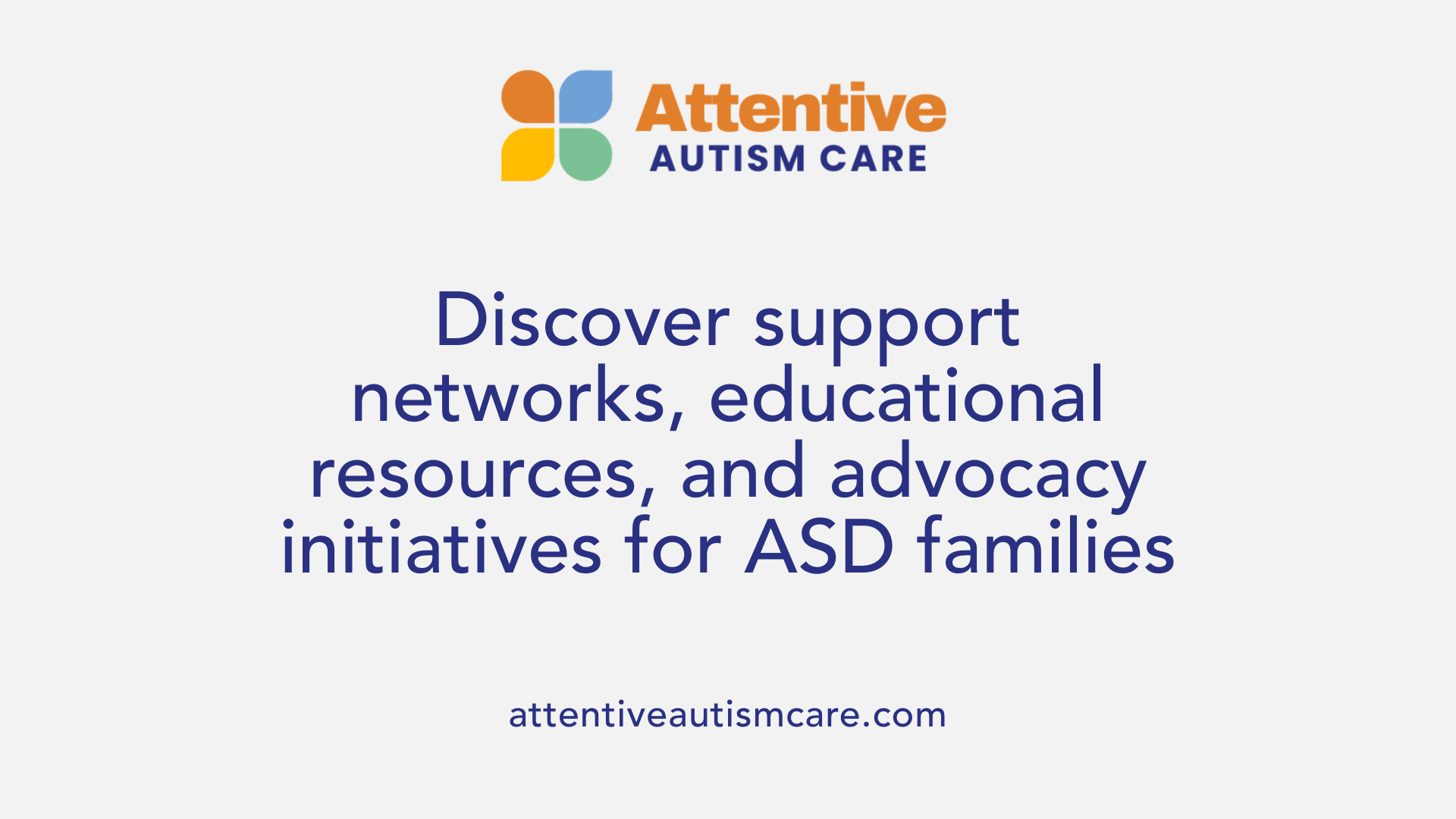What Is The Autism Spectrum Disorder?
Exploring Autism: Understanding the Spectrum and Supporting Autistic Lives

Introduction to Autism Spectrum Disorder
Autism Spectrum Disorder (ASD) is a complex neurodevelopmental condition that influences how individuals communicate, behave, and interact socially. Recognized as a spectrum, ASD manifests in a wide range of symptoms and severities, affecting each person uniquely. This article delves into the nature of autism, its signs and symptoms, causes, diagnosis, treatment options, related conditions, current research, societal perceptions, and how understanding and support can improve lives.
Understanding ASD: A Neurodevelopmental Disorder

What is Autism Spectrum Disorder (ASD)?
Autism Spectrum Disorder (ASD) is a broad, intricate neurodevelopmental condition that influences how individuals communicate, engage socially, and behave. It is characterized by challenges in social interactions, delayed language skills, and repetitive behaviors or interests. Symptoms typically emerge within the first two to three years of life, though the severity and specific traits can vary remarkably from person to person.
ASD is a lifelong condition, meaning it persists throughout a person’s life, but with early diagnosis and targeted interventions, many individuals can improve their functioning and quality of life. The spectrum nature of autism signifies its wide-ranging symptom presentations, encompassing conditions formerly diagnosed separately, such as Asperger’s syndrome and Pervasive Developmental Disorder Not Otherwise Specified (PDD-NOS). Often, individuals with ASD may also experience co-occurring conditions like attention-deficit/hyperactivity disorder (ADHD), anxiety, or depression.
While the precise causes of ASD are not fully understood, research supports a combination of genetic, biological, and environmental factors influencing its development. Factors such as genetic syndromes, prenatal exposure to certain medications, or complications during birth may increase risk. However, it is important to clarify that vaccines have been definitively shown not to cause autism, despite persistent misinformation.
What are the common signs and symptoms of autism?
Recognizing the signs of autism is crucial for early intervention, which can significantly improve outcomes. Symptoms often present in early childhood and include various struggles in communication, social engagement, and behavior patterns.
Social communication challenges are central and may manifest as avoiding eye contact, not responding when their name is called, lacking facial expressions to convey emotions, and difficulty understanding or using gestures or facial cues. Children with ASD might prefer to play alone or show limited interest in engaging with peers.
Repetitive behaviors and restricted interests are typical, with children often flapping their hands, rocking, or lining up objects in a specific way. They might develop intense focus on particular topics or objects and show resistance to changes in routine. Sensory sensitivities are common, resulting in overreactions to lights, sounds, textures, or smells, and some children may be unaffected by pain or temperature differences.
Early signs to watch for include delayed speech development, lack of response to social cues, and repetitive actions. Recognizing these symptoms allows for earlier diagnostic evaluation and support services, which are vital for helping individuals on the spectrum reach their full potential.
Spectrum of Traits and Support Needs
Autism manifests differently across individuals, with some children displaying mild challenges and others requiring substantial support. The DSM-5 classifies ASD severity into levels based on the support needed: level 1 indicating requiring support, level 2 requiring substantial support, and level 3 indicating very substantial support.
Abilities among individuals with ASD can vary widely; some may have advanced skills in certain domains, such as mathematics, music, or memory, while others might have intellectual disabilities. Communication styles are equally diverse, with some being highly verbal, others using alternative communication systems like sign language or augmentative and alternative communication devices.
Understanding this variability emphasizes the importance of personalized approaches—tailoring interventions and supports to individual strengths and challenges.
| Aspect | Typical Characteristics | Support Needs |
|---|---|---|
| Social Communication | Difficulties with eye contact, understanding gestures, using facial expressions, or engaging in reciprocal conversation | Varies from minimal to intensive support |
| Repetitive Behaviors | Hand-flapping, rocking, lining up objects, insistence on sameness | Tailored behavioral therapies |
| Sensory Processing | Over- or under-reactivity to sensory inputs such as sounds, lights, textures | Sensory integration strategies |
| Cognitive Abilities | Range from above-average to intellectual disabilities | Support plans based on abilities |
| Language Skills | From nonverbal to highly verbal | Speech and language therapy |
Understanding ASD involves appreciating its broad spectrum of traits and the individual needs of those affected. Comprehensive evaluation by healthcare and developmental specialists is essential for accurate diagnosis and effective planning.
In conclusion, autism spectrum disorder is a complex multiple facets neurodevelopmental challenge, but with increased awareness, early diagnosis, and personalized support, individuals with autism can lead fulfilling lives and participate fully in society. Continued research and societal acceptance are vital for fostering inclusive environments that respect neurodiversity and promote shared understanding.
Causes, Risk Factors, and Brain Development in ASD

What are the causes and risk factors of autism?
The causes and risk factors of autism are multifaceted, involving a blend of genetic and environmental influences. Genetic factors significantly contribute to ASD, with evidence pointing to the involvement of multiple genes. Certain genetic conditions, such as fragile X syndrome and chromosomal abnormalities, can increase susceptibility. Additionally, having a family member with autism elevates the risk, indicating a hereditary component.
Environmental influences during pregnancy and early childhood also play crucial roles. Factors like advanced parental age, prenatal exposure to pollutants, pesticides, or medications such as valproic acid and thalidomide have been associated with higher autism risk. Maternal health issues like autoimmune disorders and infections during pregnancy may further contribute. Birth complications, including prematurity and oxygen deprivation, are known risk considerations.
Overall, there is no single cause of ASD. Instead, it results from complex interactions among multiple genetic susceptibilities and environmental exposures. These factors influence early brain development, leading to the neurodevelopmental differences characteristic of autism.
How does brain development relate to ASD?
Autism Spectrum Disorder is closely linked to differences in brain development that influence neural connectivity, structure, and function. Research indicates abnormalities in several key areas of the brain, such as the cerebellum, limbic system, and the neocortex. These regions are integral to social understanding, communication, and regulation of behavior.
Differences in the size and wiring of these brain areas can disrupt typical developmental pathways, resulting in the core symptoms of ASD. For example, alterations in the amygdala and other limbic structures may impact emotional processing and social responses. Variations in cerebral cortical architecture are associated with difficulties in sensory integration and motor control.
These neural changes often originate early in fetal development, influenced by a mixture of genetic predispositions and environmental factors encountered during pregnancy or birth. Brain imaging studies support these findings, highlighting atypical patterns of neural growth and connectivity in children with ASD.
Understanding how brain development differs in autism is vital for advancing diagnostic methods and developing targeted therapies. Ongoing research continues to uncover the biological underpinnings of ASD, fostering better support and intervention strategies for affected individuals.
Diagnosis Procedures and Early Identification

How is autism diagnosed?
Autism is diagnosed through a detailed process involving developmentally focused screenings and comprehensive behavioral assessments conducted by trained healthcare professionals. These specialists include developmental pediatricians, psychologists, neurologists, or psychiatrists, who carefully observe and evaluate the individual’s behavior.
The diagnostic process typically begins with a developmental screening using standardized tools like the Modified Checklist for Autism in Toddlers (M-CHAT), Ages and Stages Questionnaires (ASQ), Screening Tool for Autism in Toddlers & Young Children (STAT), or the Preschool Activities Check List (PEDS). These tools help identify early signs of autism and determine whether a full evaluation is necessary.
Following screening, a more detailed assessment is performed. This involves clinical observations, detailed interviews with parents or caregivers, and sometimes input from teachers or other involvement in the person’s environment. Standardized diagnostic instruments such as the Autism Diagnostic Observation Schedule, Second Edition (ADOS-2), the Autism Diagnostic Interview-Revised (ADI-R), or the Childhood Autism Rating Scale (CARS) are often utilized.
Diagnosis is primarily based on criteria outlined in the DSM-5, focusing on deficits in social communication and interaction, along with restricted and repetitive behaviors. These symptoms must be present from early childhood, typically before age 3, and cause significant impairment in daily functioning.
It's important to note that there is no single medical test like a blood test or brain scan that can diagnose autism. Diagnosis relies on behavioral observations, developmental history, and the use of standardized assessment tools. Early diagnosis allows for timely interventions that can dramatically improve developmental outcomes.
Why is early diagnosis important?
Early detection of autism plays a crucial role in improving the long-term outcomes for children. When autism is identified early, usually before the age of 3, families can access targeted therapies and support services sooner. These interventions, such as applied behavioral analysis (ABA), speech therapy, occupational therapy, and social skills training, are most effective when initiated early, due to the brain’s plasticity during the critical developmental window.
Early diagnosis helps children develop key skills, including communication, social interactions, and adaptive behaviors, which can boost their independence and quality of life as they grow. It also alleviates family stress by providing clarity and direction for managing challenges and accessing educational and community resources.
Recognizing early signs—such as delays in speech, limited eye contact, repetitive behaviors, or difficulties in social engagement—encourages prompt assessment. Once diagnosed, intervention strategies can be tailored to meet each child’s unique needs, promoting better developmental trajectories.
In summary, the process of diagnosing autism involves a combination of screening tools and behavioral assessments based on established diagnostic criteria. The importance of early detection cannot be overstated, as it opens the door to interventions that have been shown to significantly improve outcomes and quality of life for children on the autism spectrum.
Interventions, Treatments, and Support Strategies
What treatment options and interventions are available for ASD?
Managing autism spectrum disorder involves a variety of interventions tailored to each individual's unique needs. Early diagnosis is vital, as it opens the door to timely support that can significantly improve developmental outcomes. Behavioral therapies, such as applied behavior analysis (ABA), are among the most well-supported approaches. These therapies focus on reinforcing desired behaviors and reducing those that interfere with learning or social interaction.
Speech and language therapy play a critical role, helping individuals communicate more effectively, whether by enhancing verbal skills or developing alternative communication methods like sign language or augmented communication devices. Occupational therapy addresses sensory sensitivities and improves daily living skills, assisting individuals in managing challenges related to touch, sight, and sound.
Support strategies also include physical therapy to facilitate motor development and coordination. Educational programs, like TEACCH and social skills groups, provide structured environments that promote social competence and cognitive skills.
While medications do not treat the core features of ASD, they can be important in managing associated conditions such as irritability, hyperactivity, anxiety, or seizures. Prescriptions like risperidone or aripiprazole, under a healthcare provider’s supervision, can help modify specific behaviors.
Overall, a comprehensive, multidisciplinary treatment plan developed in partnership with healthcare professionals supports the individual’s development, well-being, and integration into community life.
Resources, Support Systems, and Advocacy for Families
 Support networks and resources play a vital role in helping individuals with autism and their families navigate the challenges associated with ASD. Families can access a variety of services, ranging from local support groups to comprehensive educational and therapeutic programs.
Support networks and resources play a vital role in helping individuals with autism and their families navigate the challenges associated with ASD. Families can access a variety of services, ranging from local support groups to comprehensive educational and therapeutic programs.
Support Groups: Connecting with others who have similar experiences can reduce feelings of isolation and provide practical advice. Support groups are available through organizations like the Autism Society, Easterseals, and local autism councils. Many groups meet in person or online, offering peer support, sharing resources, and advocating for the needs of autistic individuals.
Educational Resources: Schools and community organizations offer tailored educational programs and interventions. Early intervention services, including speech, occupational, and behavioral therapies like Applied Behavior Analysis (ABA), are critical for young children, often starting before age 3. Educational materials, training workshops, and online modules help families understand autism and effectively support their children's development.
Healthcare Services: Access to multidisciplinary healthcare teams ensures comprehensive evaluations and ongoing care. These teams typically include developmental pediatricians, psychologists, neurologists, and speech therapists. Medical management may involve medications to address associated symptoms like irritability or hyperactivity, although no cure exists. Early diagnosis, facilitated by developmental screenings during well-child visits, is crucial for accessing these services.
Advocacy Organizations: National groups such as Autism Speaks and the Autism Society provide advocacy, public awareness campaigns, and policy reform efforts. They offer resources to help families navigate education rights, healthcare systems, and employment opportunities. These organizations also promote research funding and community integration programs to foster acceptance.
Support for Individuals and Families
| Resource Type | Services Provided | Examples |
|---|---|---|
| Support Groups | Peer support, sharing experiences | Autism Society local chapters, online communities |
| Educational Programs | Early intervention, special education | IEP planning, school-based therapies |
| Medical and Therapy Services | Diagnosis, ongoing care, behavioral, speech, occupational therapies | Autism Centers of Excellence, clinics |
| Advocacy and Policy | Rights protection, awareness campaigns, legal support | Autism Speaks, state advocacy groups |
Building Inclusive Communities and Fostering Understanding
| Approach | Actions | Examples |
|---|---|---|
| Education | Raising awareness, school programs | Sensory-friendly spaces, peer mentoring |
| Community Engagement | Promoting acceptance, reducing stigma | Public campaigns, inclusive events |
| Supportive Practices | Accommodations, individualized support | Tailored learning plans, workplace flexibility |
Fostering genuine understanding requires community commitment. Schools can implement policies that support sensory sensitivities and social integration. Employers can adapt workplaces to be more inclusive, ensuring equal employment opportunities. Families and community members who educate themselves about ASD and advocate for acceptance help to create environments where autistic individuals can thrive.
By utilizing available support systems and promoting inclusion, society can ensure that autistic individuals are recognized as valuable members with unique strengths. The collective effort of families, communities, and organizations shapes a more inclusive and understanding world for everyone.
Societal Perspectives, Challenges, and Progress
What societal issues and perspectives are important to understand about autism?
Understanding autism within society involves recognizing the unique social and communication challenges faced by autistic individuals. Many struggle with interpreting social cues such as facial expressions, tone of voice, or body language, which can make forming and maintaining relationships difficult. This difficulty often leads to social isolation, feelings of being disconnected, and can contribute to mental health issues including anxiety and depression.
Society has historically misunderstood autism, sometimes viewing it through a deficit lens or associating it with negative stereotypes. However, increasing awareness and acceptance are shifting perceptions towards viewing autism as a natural variation of human neurodiversity. Embracing neurodiversity promotes the idea that neurological differences, like autism, are part of the diversity of human experience rather than disorders to be cured.
Fostering an inclusive environment requires societal commitment to support and accommodate autistic people. This includes implementing policies that promote accessibility, understanding, and respect in schools, workplaces, and public spaces. Educational campaigns aimed at the general public help dispel myths about autism, reduce stigma, and encourage acceptance.
In terms of support strategies, early intervention programs and social skills training are crucial. These initiatives utilize tailored approaches such as peer-mediated interventions, visual supports, and structured activities that foster social participation and boost confidence. Sensory sensitivities are common among autistic individuals, so environments designed to minimize overload—such as quiet zones or calming tools—can significantly improve social interactions.
Community involvement and support networks also play a vital role. When society encourages inclusive interactions, autistic individuals can participate more fully in community life. This might include inclusive education settings, employment supports, and social opportunities that respect individual differences.
Ultimately, creating a society that understands and values neurodiversity benefits everyone. It fosters richer community life, promotes innovation through diverse perspectives, and ensures equitable opportunities for all individuals, regardless of neurological differences. By embracing acceptance, society not only supports autistic individuals but also enriches its own fabric with greater diversity, understanding, and compassion.
Promoting Awareness, Acceptance, and Support for Autism
Understanding Autism Spectrum Disorder is crucial for fostering acceptance, providing effective support, and improving quality of life for autistic individuals. A multifaceted approach encompassing early diagnosis, evidence-based therapies, resource accessibility, societal awareness, and inclusive policies can help address the diverse needs of those on the spectrum. Embracing neurodiversity and promoting societal understanding paves the way for a more inclusive world where every individual with ASD can thrive and contribute meaningfully.
References
- Autism Spectrum Disorder - National Institute of Mental Health (NIMH)
- Autism spectrum disorder - Symptoms and causes - Mayo Clinic
- What Is Autism Spectrum Disorder? - American Psychiatric Association
- About Autism Spectrum Disorder - CDC
- Autism spectrum disorder (ASD)
- Autism Spectrum Disorder (ASD) Symptoms & Causes
- Autism - Wikipedia
- Autism spectrum disorder: definition, epidemiology, causes, and ...




































































































